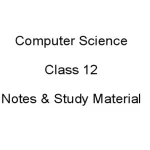The UP Judiciary exam is an essential milestone for law graduates who wish to pursue a career in the judicial services in Uttar Pradesh. It is highly competitive, requiring deep knowledge of law, legal principles, and current affairs. The syllabus outlines all the subjects and topics that candidates need to cover to succeed in the exam.
Advertisements
Exam Overview
- Exam name and code: Uttar Pradesh Judicial Services Examination (UPJS)
- Purpose and goals: The exam is designed to select candidates for the position of Civil Judge (Junior Division) in Uttar Pradesh. It is a prestigious role, with key responsibilities in the judicial process and law enforcement.
- Target Audience: Law graduates and professionals aiming to enter the judicial service in Uttar Pradesh.
Syllabus Breakdown
The UP Judiciary syllabus covers a wide range of topics, primarily focusing on law and legal procedures, but also on language and reasoning abilities.
- General knowledge: Includes history, geography, politics, and current affairs, especially those relating to India and Uttar Pradesh.
- Indian Constitution: Knowledge of the Constitution of India, including fundamental rights, duties, and judicial review.
- Civil Law: Laws related to contracts, property, torts, and civil procedure.
- Criminal Law: Indian Penal Code (IPC), Criminal Procedure Code (CrPC), and laws related to criminal justice.
- Evidence Act: Focus on the Indian Evidence Act, 1872, and its application in various cases.
- Family Law: Laws related to marriage, divorce, adoption, and inheritance under Hindu and Muslim law.
- Environmental Law: Basic understanding of environmental protection laws, pollution control, and related judicial decisions.
- English Language and Comprehension: Proficiency in the English language, including grammar, vocabulary, and comprehension skills.
Exam Format and Structure
- Question Types: The exam includes multiple-choice questions (MCQs), short answer questions, and long essay-type questions.
- Time Allocation: The total time for the exam is usually 5 hours, split into two main parts: a preliminary examination and a main examination.
- Weightage: General knowledge and law subjects are the most important, with each section having a different weightage based on difficulty.
Assessment Criteria
Advertisements
- Evaluation: The exam is graded according to the accuracy of the answers, legal reasoning, and knowledge of current affairs.
- Common Pitfalls: Many candidates fail to give enough attention to local laws of Uttar Pradesh or miss out on current legal developments.
- Grading: The answer sheets are evaluated based on legal knowledge, clarity of thought, structure of arguments, and overall presentation.
Sample Questions
- Question 1: Discuss the principle of natural justice in Indian law.
- Question 2: What are the major amendments to the Indian Constitution and their significance?
Resources and References
- Books:
- “Indian Penal Code” by Ratanlal & Dhirajlal
- “Criminal Procedure Code” by K.N. Chandrasekharan
- “Constitution of India” by Dr. Durga Das Basu
- Websites:
- UP Judiciary official website for updates on the syllabus and exam.
- Online law platforms for sample papers and mock exams.
- Articles and Journals: Legal journals like the “Indian Law Review” and “Supreme Court Journal” offer in-depth analyses of landmark cases and changes in law.
Frequently Asked Questions (FAQs)
- Is the UP Judiciary exam tough? Yes, it is a challenging exam that requires consistent preparation, thorough knowledge of law, and regular practice.
- How to stay updated for current affairs? Read newspapers regularly, focus on law-related topics, and follow judicial proceedings and updates from the Supreme Court and High Court.
- Can a candidate from another state apply? Yes, candidates from any state in India are eligible, provided they meet the educational and age criteria.
Latest Posts
- Step-by-step guide to download and apply for jee mains admit card 202
- Comprehensive 2025 government holidays and recruitment details for job seekers
- JEE Mains Admit Card 2025: Your Step-by-Step Guide to Downloading the Hall Ticket
- Everything You Need to Know About 2025 Government Holidays Recruitment
- Comprehensive Guide to rrb d group recruitment 2025 – Eligibility, Vacancies, and Application
- Detailed guide to nps trust recruitment 2025 vacancies, eligibility and apply process
- Comprehensive guide to hpcl recruitment 2025 notification, vacancies, and application process
- ignou bed admission 2025 complete recruitment guide with eligibility and process
- Comprehensive Guide to Indian Army Agniveer Recruitment 2025 Notification and Jobs
- Everything You Must Know About CBSE Board Exams 2025 Changes & New Rules






